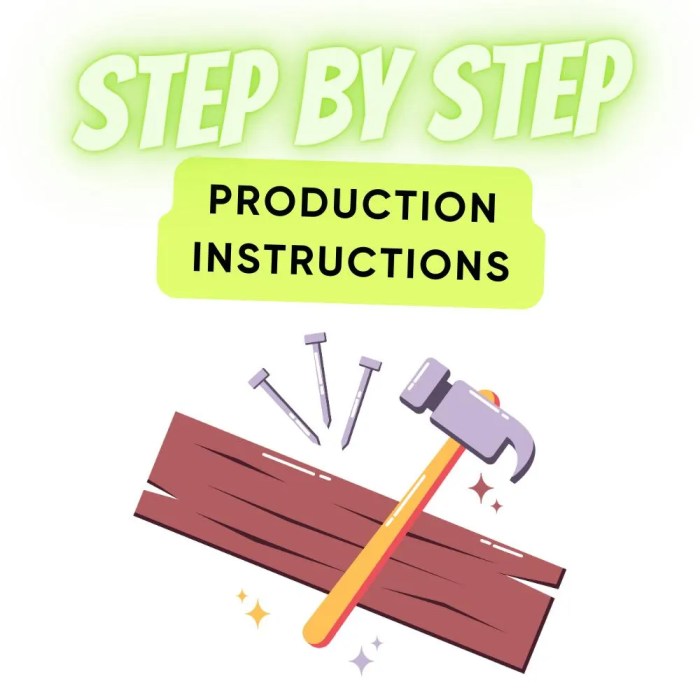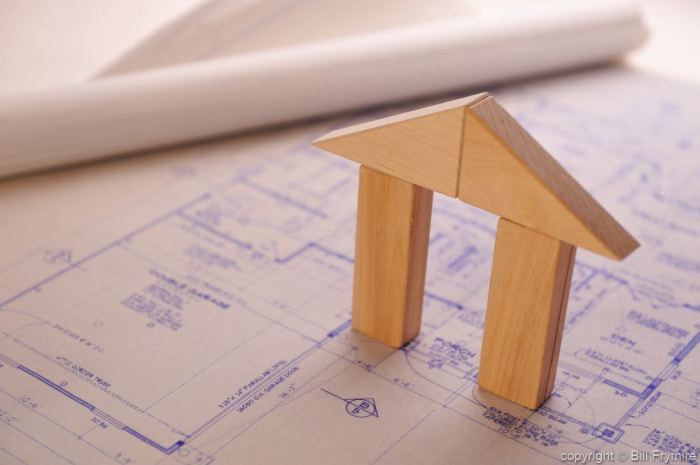Woodworking plans are the blueprints to crafting beautiful and functional pieces, from intricate furniture to sturdy outdoor structures. Whether you’re a seasoned woodworker or just starting out, these plans provide a roadmap for success, guiding you through every step of the process.
From understanding plan components to selecting the right tools and materials, woodworking plans empower you to bring your creative visions to life. With a clear understanding of the plans, you can confidently tackle any woodworking project, ensuring accurate measurements, precise cuts, and a satisfying outcome.
Finding and Selecting Woodworking Plans

Finding the right woodworking plan is essential for a successful project. You want a plan that matches your skill level, the complexity of the project, and the tools you have available.
Reputable Sources for Woodworking Plans
There are many sources for woodworking plans, but not all are created equal. You want to find plans from reputable sources that provide detailed instructions and accurate measurements. Here are some popular options:
- Woodworking Magazines: Magazines like Woodworking Magazine, Fine Woodworking, and Popular Woodworking offer a wide variety of plans, from beginner to advanced projects. These magazines are known for their high-quality plans and detailed instructions.
- Online Woodworking Communities: Online forums and communities like Lumberjocks and Woodworking Talk are great places to find free woodworking plans. You can also connect with other woodworkers and ask for advice on finding the right plan.
- Woodworking Books: Books dedicated to specific woodworking projects or techniques often include detailed plans. Popular authors like Paul Sellers and Chris Schwarz are known for their comprehensive plans and clear instructions.
- Online Retailers: Online retailers like Rockler and Woodcraft offer a variety of woodworking plans, both free and paid. They often provide detailed instructions and videos to help you understand the plan.
Selecting the Right Woodworking Plan
Choosing the right woodworking plan depends on your skill level, the complexity of the project, and the tools you have available.
- Skill Level: If you are a beginner, start with simple projects like a birdhouse or a cutting board. As you gain experience, you can move on to more challenging projects.
- Project Complexity: Consider the time and effort required to complete the project. If you are short on time, choose a simpler project. For more complex projects, ensure you have the necessary skills and tools.
- Available Tools: Make sure you have the tools needed to complete the project. If you don’t have certain tools, consider renting or buying them before starting the project.
Reviewing Plan Details
Once you’ve found a plan you like, it’s important to carefully review the details.
- Materials: The plan should specify the types and quantities of wood, hardware, and other materials needed. Make sure you understand the different types of wood and their properties.
- Dimensions: The plan should include precise dimensions for all parts of the project. Carefully measure and cut your wood to ensure accuracy.
- Assembly Steps: The plan should provide clear and detailed instructions for assembling the project. Take your time and follow the instructions carefully.
Understanding Woodworking Plan Components

Woodworking plans are the blueprints for your projects, guiding you through each step to create a successful finished product. Understanding the components of a woodworking plan is crucial for successful project completion.
Diagrams
Diagrams are visual representations of the project, providing a clear understanding of the overall design and construction. They show the dimensions, shape, and arrangement of the different parts of the project. Diagrams can be 2D or 3D, with 2D diagrams commonly used for basic layouts and 3D diagrams offering a more realistic view of the final product.
- 2D Diagrams: These are often used for showing the layout of the project, including the dimensions of the individual parts and their positions relative to each other. They are typically presented as blueprints or orthographic drawings.
- 3D Diagrams: These provide a more realistic representation of the project, showing the three-dimensional shape and how the different parts fit together. 3D diagrams are helpful for visualizing the final product and understanding the construction process.
Cut Lists
A cut list is a detailed inventory of all the materials needed for the project, including the type of wood, dimensions, and quantity. It also includes any necessary hardware, such as screws, nails, or glue. The cut list helps you ensure you have all the necessary materials before starting the project, preventing delays and frustration.
- Wood Type and Dimensions: The cut list specifies the type of wood to use for each part of the project, such as pine, oak, or maple. It also provides the precise dimensions, including length, width, and thickness, for each piece.
- Quantity: The cut list indicates the number of pieces required for each part of the project. This ensures you have enough material for the entire project.
- Hardware: The cut list may also include a list of necessary hardware, such as screws, nails, glue, or other fasteners. This helps you gather all the required materials before starting the project.
Assembly Steps
Assembly steps are the instructions that guide you through the construction of the project. They are usually presented in a sequential order, with clear descriptions and illustrations. The assembly steps provide a detailed guide on how to join the different parts of the project, ensuring a strong and stable finished product.
- Step-by-Step Instructions: The assembly steps are presented in a logical order, starting with the basic components and progressing to the final assembly. This ensures that you build the project correctly, step by step.
- Clear Descriptions: The assembly steps are written in a clear and concise manner, providing detailed instructions for each step. This helps you understand the process and avoid any confusion.
- Illustrations: The assembly steps are often accompanied by illustrations or diagrams, providing a visual guide for each step. This helps you understand the process and ensure that you are building the project correctly.
Woodworking Plan Interpretation and Implementation
Woodworking plans are your roadmap to building a successful project. They contain all the information you need to cut, shape, and assemble your pieces, ensuring your project comes out as intended. This section will guide you through interpreting woodworking plans, setting up your workspace, and implementing the plan step by step.
Reading Woodworking Plans
Woodworking plans typically include a combination of diagrams, measurements, materials lists, and assembly instructions. Understanding these elements is crucial for accurate project execution.
- Diagrams: Diagrams are visual representations of the project, showing the overall design, individual components, and their relationships. They may include top, side, and front views to provide a comprehensive understanding of the piece. Pay close attention to lines, symbols, and annotations, which provide important information about dimensions, joinery, and assembly.
- Symbols: Woodworking plans use various symbols to convey specific instructions or features. Familiarize yourself with common symbols like those for different wood types, cuts, joinery methods, and assembly techniques. A legend or key will usually be included to explain the meaning of each symbol.
- Measurements: Measurements are critical for ensuring accurate construction. Pay close attention to the units used (inches, centimeters, etc.) and the scale of the drawings. It’s always best to double-check measurements before making any cuts.
- Materials List: The materials list specifies the types and quantities of wood, hardware, and other materials required for the project. Review the list carefully and gather all necessary materials before starting.
- Assembly Instructions: Assembly instructions guide you through the process of putting the project together. They typically provide a step-by-step sequence, often with illustrations, showing how to join different components. Follow the instructions carefully and refer to the diagrams if needed.
Preparing Your Workspace, Woodworking plans
A well-organized workspace is essential for efficient and accurate woodworking. Before you begin, take some time to prepare your workspace:
- Clear the Area: Ensure your workspace is free of clutter and obstructions. You need ample space to move around safely and comfortably.
- Provide Adequate Lighting: Good lighting is crucial for accurate measurements and safe work practices. Use a combination of overhead and task lighting to illuminate your work area effectively.
- Set Up Your Tools: Gather all the tools you’ll need for the project and arrange them within easy reach. This saves time and prevents unnecessary searching during the construction process.
- Organize Materials: Arrange your wood and other materials in an organized manner, keeping them close to your work area. This ensures you have everything you need within reach and minimizes the risk of tripping or accidents.
Gathering Necessary Tools and Materials
Before you begin, carefully review the materials list and tool list provided in the woodworking plan. It’s important to have all the necessary materials and tools on hand to avoid delays and potential frustration.
- Materials: Ensure you have all the required wood types, dimensions, and quantities, as well as any hardware, finishes, or other materials specified in the plan.
- Tools: Gather all the necessary hand tools, power tools, and measuring tools. This might include saws, planes, chisels, drills, sanders, clamps, rulers, measuring tapes, squares, and levels.
Accurate Measuring, Cutting, and Assembly
Accurate measuring, cutting, and assembly are fundamental to a successful woodworking project. Here’s how to implement these steps effectively:
- Measure Twice, Cut Once: Always double-check your measurements before making any cuts. An error in measurement can lead to significant rework later in the project. Use a combination of measuring tools, such as rulers, measuring tapes, and squares, to ensure accuracy.
- Cutting: Choose the appropriate cutting tool for the type of wood and cut required. Use a saw guide or jig for precise cuts, especially when working with delicate or intricate shapes. Always wear safety glasses and hearing protection when using power tools.
- Assembly: Follow the assembly instructions carefully, ensuring that all components are aligned and securely joined. Use clamps to hold pieces in place while glue dries or screws are fastened. Refer to the diagrams frequently to confirm the correct orientation and alignment of each piece.
Woodworking Plan Resources and Tools

The journey of building a woodworking project from a plan requires more than just the plan itself. You need a strong understanding of woodworking resources and tools, both online and in your workshop. This section will explore some of the essential resources and tools that can help you bring your woodworking dreams to life.
Online Communities and Forums
Online communities and forums dedicated to woodworking are invaluable resources for finding inspiration, sharing knowledge, and getting help with projects. They offer a platform for woodworkers of all skill levels to connect, exchange ideas, and troubleshoot problems.
- Woodworking Forums: These forums are specifically designed for woodworkers, offering a wide range of discussions on topics like project ideas, techniques, tool reviews, and wood selection. Some popular woodworking forums include:
- The Woodworking Forum: A comprehensive forum with a diverse range of topics and a large, active community.
- Lumberjocks: A forum that focuses on woodworking projects, showcasing finished work and providing a space for sharing ideas.
- Woodworking Talk: A forum with a strong emphasis on woodworking techniques and discussions about tools and materials.
- Social Media Groups: Facebook and other social media platforms have active woodworking groups where you can connect with other woodworkers, share your projects, and get advice. These groups often feature project tutorials, tool reviews, and discussions on specific woodworking topics.
Essential Woodworking Tools and Equipment
The tools and equipment you need for woodworking will depend on the types of projects you plan to undertake. However, there are some essential tools that every woodworker should have.
- Power Tools:
- Circular Saw: A versatile tool for making straight cuts in wood.
- Jigsaw: Used for making curved cuts and intricate shapes.
- Router: A powerful tool for creating edges, profiles, and grooves.
- Belt Sander: For sanding large flat surfaces.
- Random Orbit Sander: For sanding curved surfaces and achieving a smooth finish.
- Hand Saw: For making straight cuts in wood.
- Chisels: For carving and shaping wood.
- Planes: For smoothing and shaping wood surfaces.
- Clamps: For holding pieces of wood together while gluing or cutting.
- Screwdrivers: For assembling and disassembling woodworking projects.
- Safety Glasses: Protect your eyes from flying debris.
- Hearing Protection: Protect your ears from loud noises generated by power tools.
- Dust Mask: Protect your lungs from wood dust.
- Work Gloves: Protect your hands from cuts, splinters, and burns.
Learning Woodworking Techniques
The world of woodworking offers endless opportunities to learn and grow. There are numerous resources available to help you master new techniques and improve your skills.
- Online Tutorials: Websites like YouTube, Skillshare, and Udemy offer a wealth of woodworking tutorials covering a wide range of topics. These tutorials can teach you everything from basic hand tool techniques to advanced joinery methods.
- Woodworking Books: There are countless books available that cover every aspect of woodworking, from project plans to detailed explanations of techniques. Some popular woodworking books include:
- “The Complete Illustrated Guide to Woodworking” by Bob Vila: A comprehensive guide covering all aspects of woodworking.
- “The Woodworker’s Bible” by Robert W. Lang: A comprehensive resource for woodworkers of all skill levels.
- “The Taunton Encyclopedia of Woodworking” by The Taunton Press: A comprehensive reference book covering all aspects of woodworking.
- Woodworking Workshops: Local woodworking schools and community colleges offer workshops and classes that provide hands-on training in woodworking techniques. These workshops are a great way to learn from experienced instructors and gain practical experience.
Project Planning and Execution: Woodworking Plans

Project planning is crucial in woodworking, as it helps you avoid costly mistakes and ensures a successful outcome. Proper planning involves defining your project goals, setting a realistic budget, and allocating sufficient time for completion. It also includes selecting the right materials and tools, ensuring you have everything you need before you begin.
Project Planning
A well-defined plan helps you stay organized and focused, making the woodworking process more enjoyable and efficient.
- Budgeting: Start by estimating the cost of materials, tools, and any necessary supplies. Consider factors like wood type, finishes, hardware, and potential waste. Create a realistic budget that accounts for unforeseen expenses.
- Time Management: Assess the complexity of your project and estimate the time required for each stage, from design and preparation to assembly and finishing. Allocate enough time for each step, allowing for unexpected delays or challenges.
- Material Selection: Choosing the right wood is essential for the durability and aesthetic appeal of your project. Consider the wood’s properties, including hardness, grain pattern, and workability. Research different wood species and their suitability for your project.
Project Execution
Once you have a comprehensive plan, it’s time to put it into action. This involves a series of steps that guide you from the initial design to the final finishing touches.
- Preparation: Gather all your materials, tools, and safety equipment. Prepare your workspace, ensuring it is clean, well-lit, and adequately ventilated.
- Cutting and Shaping: Cut and shape the wood according to your plan, using precision tools and techniques. Take your time and make accurate measurements to avoid errors.
- Assembly: Join the pieces together using appropriate methods, such as glue, screws, or dowels. Ensure a secure and stable connection.
- Finishing: Sand, stain, or paint your project to achieve the desired look and protect the wood. Apply finishes in a well-ventilated area and follow the manufacturer’s instructions.
Troubleshooting and Success
Woodworking can present challenges, but with careful planning and execution, you can overcome obstacles and achieve successful results.
- Common Challenges: Woodworking projects can involve unexpected issues like wood warping, tool malfunctions, or inaccurate measurements.
- Troubleshooting Tips: When encountering problems, identify the cause, research potential solutions, and implement appropriate corrective actions. Consult online resources, woodworking books, or experienced woodworkers for guidance.
- Project Success: To ensure a successful outcome, focus on accuracy, precision, and attention to detail. Take your time, double-check your work, and don’t be afraid to seek help when needed.
Woodworking Plan Inspiration and Ideas

Woodworking plans can serve as a roadmap to bring your creative vision to life, but sometimes you need a spark to ignite your imagination. Exploring the world of woodworking projects can be a great way to discover new possibilities and find inspiration for your next creation.
Popular Woodworking Projects
Popular woodworking projects offer a great starting point for beginners and seasoned woodworkers alike. These projects are often chosen for their practicality, aesthetic appeal, or the challenge they present.
- Furniture: From simple coffee tables and nightstands to intricate dining sets and bookcases, furniture projects are a popular choice for woodworkers.
- Home Décor: Add a personal touch to your home with handcrafted items like picture frames, decorative boxes, and wall shelves.
- Outdoor Structures: Build a birdhouse, a garden bench, or a small shed to enhance your outdoor space.
Inspiring Woodworking Projects
Renowned craftspeople and designers often push the boundaries of woodworking, creating innovative and awe-inspiring projects. These projects can provide a wealth of inspiration and demonstrate the possibilities of wood as a medium.
- Samuel Maloof, a renowned furniture maker, is known for his organic forms and use of natural materials. His pieces are often characterized by flowing lines and a sense of warmth.
- George Nakashima, another influential furniture maker, was known for his use of salvaged wood and his respect for the natural beauty of wood. His furniture pieces are often considered works of art.
- Thomas Moser, a contemporary furniture maker, is known for his meticulous craftsmanship and use of traditional woodworking techniques. His furniture is characterized by its elegance and durability.
Developing Your Own Woodworking Projects
Exploring your creativity and developing your own unique woodworking projects is a rewarding experience. Think about your interests, hobbies, and the needs of your home or workspace. Consider incorporating your personal style and aesthetic preferences into your designs.
- Personalize Existing Plans: Start with a woodworking plan you like and modify it to fit your specific needs or style.
- Sketch and Brainstorm: Use sketches and drawings to develop your ideas and explore different possibilities.
- Experiment with Materials: Explore different types of wood, finishes, and hardware to create unique and interesting projects.
Closing Summary

The world of woodworking plans is vast and exciting, offering endless opportunities for creativity and skill development. By embracing the power of plans, you can unlock a world of possibilities, transforming your woodworking dreams into tangible realities. Whether you’re building a cherished heirloom or simply enjoying the satisfaction of a well-crafted project, woodworking plans are your indispensable companions on this rewarding journey.
Question & Answer Hub
Where can I find free woodworking plans?
Many websites offer free woodworking plans, including Ana White, Woodworking for Mere Mortals, and The Wood Whisperer. Be sure to check their websites and explore the vast collection of plans available.
What is a cut list in a woodworking plan?
A cut list is a detailed breakdown of all the wood pieces required for your project, including their dimensions, quantity, and type of wood. It’s an essential component for accurate material purchasing and efficient project execution.
How do I choose the right woodworking plan for my skill level?
Most woodworking plans are categorized by skill level, ranging from beginner to advanced. Choose a plan that aligns with your current woodworking experience to ensure a rewarding and enjoyable project.
Woodworking plans are a great way to get started with a project, but sometimes you need a little more guidance. That’s where woodworking books come in handy. They can offer detailed instructions, tips, and tricks that can help you take your woodworking skills to the next level.
Once you’ve got the basics down, you can use your newfound knowledge to tackle even more complex woodworking plans.
